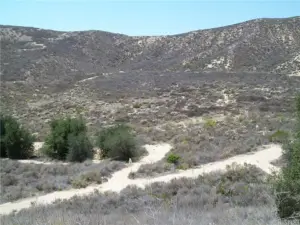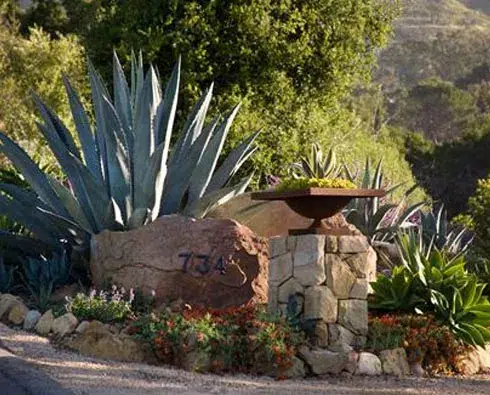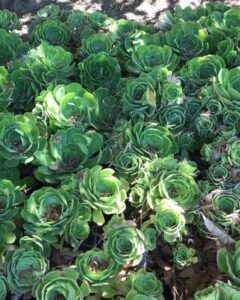Why are Fire-Resistant Plants important?

Fire-resistant plants started gaining a lot of attention recently as extreme wildfires continue to devastate more area in one year than ever before in recorded history.
According to Congressional Research Service, in United States alone,
From 2013 to 2022, there were an average of 61,410 wildfires annually and an average of 7.2 million acres impacted annually. In 2022, 68,988 wildfires burned 7.6 million acres. Over 40% of those acres were in Alaska (3.1 million acres). As of June 1, 2023, around 18,300 wildfires have impacted over 511,000 acres this year.
Due to accelerating climate change and the increase in quantity and intensity of extreme weather events, and specifically wildfires, questions come up on how we can better protect ourselves, our families, and our communities.
Specifically in California, we are constantly living with the threat of wildfires. It is not a question of if, but a question of when the next major wildfire will start. We need to be prepared.
Fire-resistant drought-tolerant landscaping plays a crucial role in the fire prevention strategy.

Here in California, we have an additional complication of extreme drought and water shortage, which means that most unirrigated or under-irrigated landscapes contain mostly brush that is completely dry and highly flammable.
We cannot increase irrigation because we want to conserve water and we cannot let plants dry out because that will make them a fire hazard.
Thus we find ourselves in a double-bind, looking for fire-resistant drought-tolerant plants.
To make things even more challenging, we can elevate to our mission to not only protect humans and our residential areas but also help protect wildlands.
We can accomplish this goal by creating sustainable and drought-tolerant fire-wise gardens that also limit the use of potentially harmful chemicals such as fertilizers and pesticides, and also avoid invasive plant species.
According to Fire Safe Marin, the idea is to surround the house with things that are less likely to burn while being beautiful and low maintenance.
When building homes in wildfire-prone areas, fire safety must be the first major consideration in landscape design.
Fortunately beautiful, low maintenance, fire-resistant drought-tolerant plants do exist!
In this article we will discuss:
- What are fire-resistant plants? Fire-proof vs. Fire-resistant.
- How to choose the right fire-resistant plants?
- List of fire-resistant plants.
- How to use fire-resistant plants to minimize the risk of the wildfires on our residential areas, farms, and orchards?
- What is fire-resistant landscaping?
- Why is it important for the fire-resistant plants to no be invasive species?
- Can non-fire-resistant plants be used in firesafe landscape?
What are fire-resistant plants? Fire-proof vs. Fire-resistant.
Any plant species can burn. No plant is fire-proof.
According to https://defensiblespace.org, fire-resistant plants are those that do not readily ignite from a flame or other ignition sources. These plants can be damaged or even killed by fire; however, their foliage and stems do not significantly contribute to the fuel and fire’s intensity.
The goal is to have plants that will not spread the fire or make it larger.
There are several factors that influence the fire-resistant characteristics of plants, such as leaf moisture content, shape and size of the plant, presence of dead material, and chemical content of the sap.
We need to choose high-moisture plants that grow close to the ground, have a low sap or resin content, are drought-tolerant, and are easy to maintain.
Why choose high moisture plants for fire-safe landscape?
High moisture plants such as succulents and fruit trees are much harder to ignite. They will not only not contribute to the fire, but might actually slow it down. The fire wants to follow the path of least resistance and high moisture plants put up a lot of resistance. Succulents are often used to create a fire-break.
During latest wildfires in San Diego County, residents’ house was saved due to a large agave in their driveway. Agave was scorched on one side but the house was unharmed. Their neighbor’s house was completely destroyed due to the fire climbing a bougainvillea vine next to the entryway.
Why are low to the ground plants preferred?
This prevents ladder fuels (fire jumping from flammable ground cover to shrubs to shorter trees to taller trees) so a surface fire cannot reach the tree crowns.
Why choose low sap or resin content plants for fire safety?
Avoiding plants with gummy sap, high resin and oil levels, and leaves that are aromatic when crushed, is important because those oils and resins are often highly flammable.
Eucalyptus is an example of high oil content tree which is highly flammable. Eucalyptus drops much more debris than native California trees, which creates a perfect combination of oxygen and fuel. Eucalyptus trees are called “gasoline trees” in Australia for their tendency to explode in fireballs at very high temperatures. They drop far more flammable litter per acre than native trees and their embers stay lit longer and fly farther than embers from other vegetation.
Why do firesafe plants have to be be drought-tolerant?
Since climate change and extreme drought are our new reality, we need to be operating under an assumption that more and more restrictions on irrigation will be implemented in the future. We don’t want to create a beautiful fire-safe landscape only to have our lovely carefully chosen plants turn into flammable brush due to water shortage.
Why do firesafe plants have to be easy to maintain?
A key question to ask is ‘how easy is it to maintain this plant? Look critically at any plant that can harbor leaf litter and embers when blown in.
How to choose the right fire-resistant plants?
Because no list of fire-resistant plants will ever be complete and all-inclusive, it is useful to be able to look at any plant and decide whether it belongs in a firesafe landscape.
Any plant that is dying or dead, over-aged, water starved, infested by pests, or improperly cared for is more flammable.
For a fire-resistant plant you are looking for the absence of the following characteristics which would make the plant highly flammable:
Fine, dry, or dead material with-in the plant, such as twigs, needles, and leaves, loose or papery bark.
Does the plant look dry? Look carefully.
The plant might look green and healthy, however, when you look inside the branches, close to the trunk, you might see that the green new leaves are only on the outside, while inside of the tree or shrub is composed of dry fine branches. This is especially true for many drought-tolerant California natives which develop new growth on the outside only.
This is the case of drought tolerant plant not being firesafe.
Leaves, twigs, and stems contain volatile waxes, sap, or oils. If the bark or leaves of the plant have a strong aroma or feels oily, it is probably flammable and a sign to stay away from this plant in a firesafe landscape. Example is a great example of not firesafe tree as described above.
In general, according to Fine Gardening, when deciding whether the plant is firesafe, the following rules apply:
- Deciduous plants are less flammable than evergreens.
- Broadleaf plants are less flammable than those with needle and blade like leaves.
- Moist and easily bent leaves are less flammable than stiff and leather like leaves.
- Thick leaves are less flammable than fine or thin leaves.
- Plants that produce a low amount of litter are less flammable than those that produce a lot of litter.
- Plants with sap that looks more like water are less flammable than plants with thick, gummy or resinous sap.
- Plants without fragrance are less flammable than plants with aromatic qualities.
- Plant leaves without hair (cilia) are less flammable than those with hair, including the underside of leaves.
List of fire-resistant plants:

1. Succulents
Any and all succulents are wonderful fire-resistant plants. High moisture, non-invasive, drought-tolerant plants that come in so many shapes and sizes to create a stunning and safe landscape. Prickly pears and aloes, for example, are not only beautiful but have added benefits of culinary and medicinal value.
When succulents and cactus can be successfully grown, there is no better plant at retarding a fire.
2. Geranium
So many varieties and so beautiful.
3. Fruit Trees
Fruit Trees are often evergreen trees that hold plenty of moisture, and many can tolerate drier conditions at least for some time. In addition they provide an abundance of food. So many options. So beautiful. So delicious. Well-maintained fruit orchards make an excellent fire-break.
4. Vegetable Gardens
Artichokes
Nasturtium
Periwinkle
Bird of Paradise
Camelia
Hibiscus
Roses
Lilac
Maple
Birch
Ficus
Ash
Sycamore
California Pepper Tree – Although they are not native to the state, California pepper trees are considered to be fire-resistant. This is because the trees have a high water content and their leaves are not as flammable as those of other trees.
Coastal Live Oak – Oak trees are important wildlife resources and have actually been found to suppress fire.
Toyon – If properly situated, they can grow very quickly, up to 10 feet in three years. Toyon can be planted near houses since they are fire retardant when given enough moisture. They are an excellent hedge plant.
Magnolia
Trumpet Vine
Jasmine
Wisteria
African Daisy
California Poppy
Lemonade Berry
Can Non-Fire-Resistant Plants be used in Firesafe Landscape?
According to Fire Safe Marin, you CAN make non fire-resistant plants much more resistant to ignition during a wildfire.
- Remove vegetation around the base of the trees
- Remove small-diameter lower limbs up to at least one-third of the tree’s height
- Remove limbs within 10 feet of the ground
- Remove all dead wood, peeling bark, and twiggy growth REGULARLY
- Provide canopy separation so that no limbs touch nearby trees or plants
- Remove all “ladder fuels
You also might want to ask yourself some questions: How far away is the plant from the house? Where does it fall on the defensible space plan? How big is it? How old is it? How critical it is to keep this tree versus the risk of fire?
work in progress… check back soon

